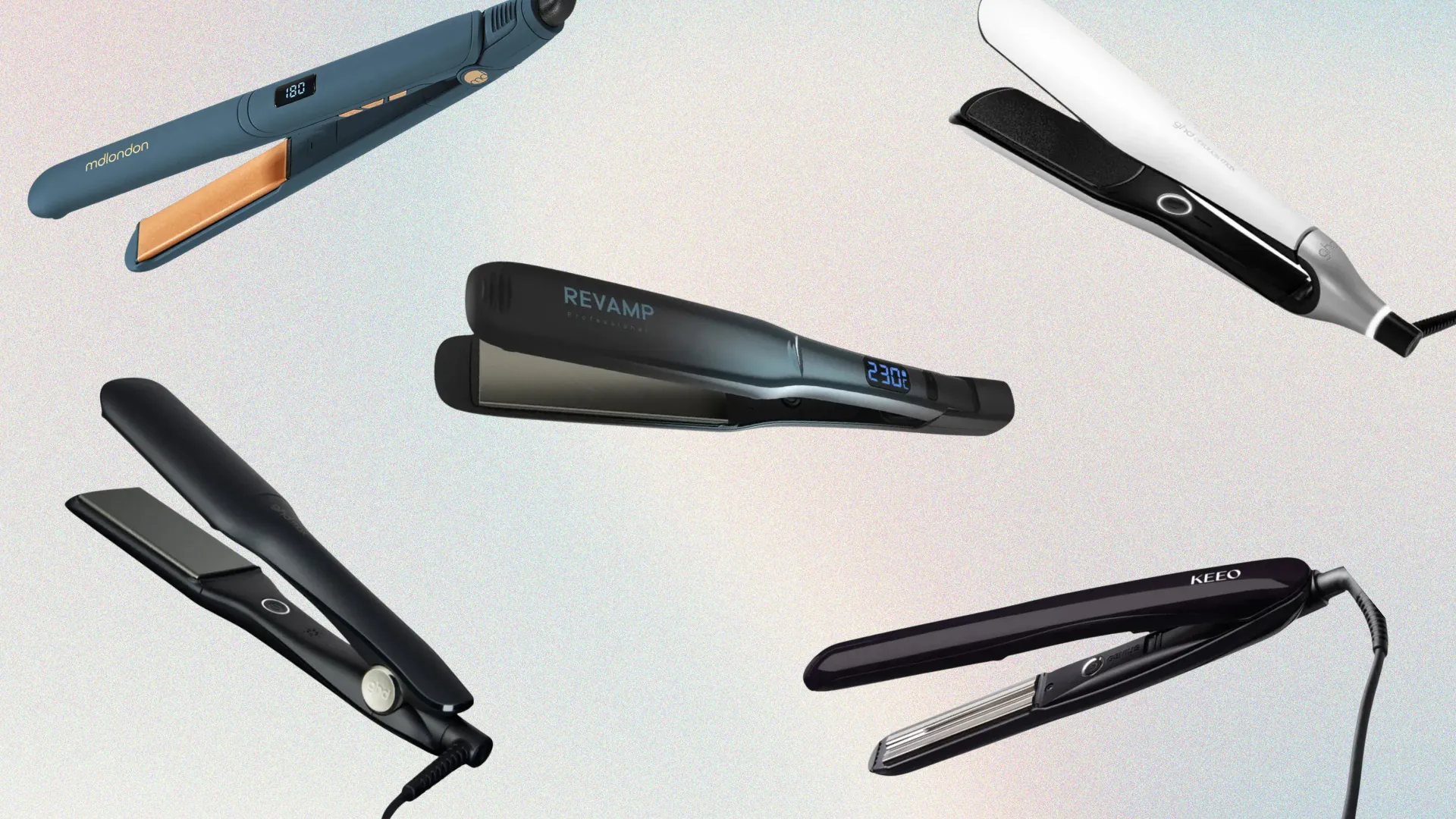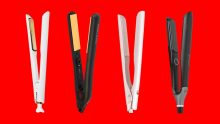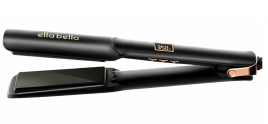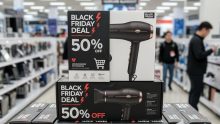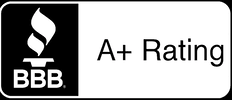Advertising Disclosure
Best Hair Straighteners for Fine Hair in 2025: Top Picks for Gentle and Effective Styling
Fine hair requires a more careful approach to heat styling. Compared to medium- or coarse-textured materials, it bends more easily, breaks more readily, and loses moisture faster. Even when you’re trying to achieve a smooth finish, high temperatures can cause delicate strands to frizz, weaken, and fall flat. This is why selecting the right tool is so important. During our salon testing sessions, we worked with clients whose fine hair reacted strongly to even minor temperature changes. Their results helped us understand which models support healthy styling and which ones create unnecessary damage.
People with fine hair often search for the best straighten, but the answer depends on several factors: glide quality, temperature control, plate type, and long-term durability. A hair straightener for fine hair needs even heat distribution, smooth coatings, and steady low-to-medium temperatures. Without these features, hair becomes dry and brittle. When everything works together, the results are smooth, soft, and long-lasting with minimal effort.
In this guide, we present our findings after a week of hands-on testing with several professional and consumer models. Our goal is to help you choose the best hair straighteners for fine hair that balances gentle performance with dependable styling power. We also outline techniques and best practices for protecting delicate strands. Whether you want soft straightening, light shaping, or defined curls, the tools featured here ranked highly in our 2025 evaluations.
Key Features to Look for in Hair Straighteners for Fine Hair
Fine hair does best with consistent, moderate heat rather than intense high temperatures. Many fine hair straighteners promote extreme heat as a selling point, but this is rarely ideal for fine textures. A good flat iron for fine hair uses controlled, warm settings rather than aggressive heat. This helps maintain internal moisture and prevents damage to the hair’s structure.
The most important feature to look for is temperature control. Tools designed for fine strands allow precise adjustments in smaller increments, helping you control exposure and reduce the need for repeated passes. A hair straightener for fine hair should ideally offer settings below 350°F with stable performance. During our tests, irons with micro-sensors performed better because they prevented heat spikes.
Plate materials significantly affect how hair responds. Ceramic is the most forgiving because it distributes heat smoothly and evenly. Tourmaline adds extra glide and increases ionic output, which helps reduce static — something fine hair is especially prone to. Titanium offers speed and strength, but should only be used with excellent temperature control. The best hair straightener for thin, fine hair often includes a ceramic-tourmaline blend to protect fragile ends.
Ionic technology is another important feature. Fine strands often pick up static, especially in colder seasons. Negative ions help keep the cuticle lying flat, reducing frizz and flyaways. Some advanced tools also use coatings like nano-silver or infrared systems to maintain softness and shine without aggressive heat.
Plate design also makes a difference. Narrow plates give better control over delicate sections, bangs, and shorter layers, while wider plates may drag or flatten hair too much. A recommended flat iron for fine strands usually features slim, smooth, and lightweight plates.
Why Precise Temperature Control Matters for Fine Hair
Fine hair reacts quickly to heat, making temperature accuracy crucial. Overheating can cause breakage, split ends, and a dull texture that lingers even after conditioning. Tools without proper sensors may overheat during pauses or slow passes, which can weaken the cuticle — especially near the ends.
Most experts agree that fine hair responds best to temperatures between 275°F and 325°F. This range provides enough warmth to smooth the cuticle without stripping moisture. If you’ve ever wondered what is the best flat iron for fine hair, the answer usually starts with temperature stability rather than brand or plate style.
Modern tools use heat sensors to monitor temperature several times per second. When we tested high-end models, those with micro-adjustments produced smoother results on the first pass and reduced the risks of prolonged heat contact. This helps maintain shine and reduces styling time.
For anyone searching for the best straightener for fine hair, heat control should be the first specification to compare.
Plate Materials and Coatings That Protect Fine Hair
The three most popular materials for flat irons are ceramic, tourmaline, and titanium. Each behaves differently during styling.
Ceramic plates deliver gentle, even heat. They warm gradually, reducing the risk of sudden temperature spikes. Tourmaline plates enhance the ceramic’s performance by adding smooth glide and negative ion release. Titanium heats quickly and maintains a consistent temperature, but can be too powerful for delicate textures unless paired with excellent sensors.
The best hair straightener for fine hair typically features ceramic or ceramic-tourmaline plates, which distribute heat evenly while reducing friction. This prevents snagging and pressure lines, common problems with fragile ends.
Some tools also use advanced coatings. Nano-silver can help keep plates cleaner. Infrared technology warms hair from within rather than through intense surface heat. These innovations support safe styling and consistent results.
If your strands are fragile or color-treated, choose a fine hair straightener with ceramic-tourmaline plates and a smooth coating for the safest results.
Top Hair Straightener Models for Fine Hair in 2025
Our team tested several models designed specifically for delicate strands. Each tool was used for multiple sessions on clients with thin, soft, or easily damaged hair. By comparing smoothness, glide, temperature accuracy, and long-term comfort, we identified the models that consistently delivered gentle but effective results. These flat irons work well for straightening, shaping curls, or creating soft waves.
Based on temperature precision, plate smoothness, and overall gentleness, the top performers included:
- GHD Platinum+ Styler
- Bio Ionic OnePass 1″
- T3 SinglePass Compact
- CHI Lava Ceramic
- Remington Shine Therapy Ceramic
These models balanced comfort and durability. Lighter designs helped prevent wrist fatigue, and ergonomic plates made it easier to style smaller sections. The combination of controlled temperatures and smooth coatings kept delicate ends from drying out. The best hair straighteners for fine hair on this list ranked highly for users seeking the safest and most effective results for fine or thin textures.
Common features across top performers:
- Low-heat precision settings
- Ceramic or ceramic-tourmaline plates
- Lightweight ergonomic design
Prices vary among models. Professional tools tend to cost more but offer better micro-sensor systems. Mid-range options still perform well for home users. Budget models require more passes but can work when paired with proper technique and heat protectants.
Our list also included tools marketed as the best hair straightener for fine curly hair, which use gentler plate pressure and smoother coatings to preserve curl structure when desired.
Best Overall: A Straightener Balancing Performance and Protection
The top model from our 2025 testing delivered the strongest combination of gentle heat and consistent glide. It worked well on extremely delicate textures and produced smooth results with minimal effort. Its temperature settings responded quickly, allowing stylists to adjust for sensitive ends or uneven density.
The GHD Platinum+ Styler stood out as the strongest performer. Its predictive heat sensors adjust temperature in real time, protecting delicate strands during each pass. Users with fine hair appreciated its smooth ceramic plates and quick styling time. It consistently delivered polished results without flattening natural volume.
Users praised its lightweight design, slim plates, and long cord. Stylists noted its durability and strong hinge alignment. These factors helped position it among the best straightener options for fine hair this year.
What made this model especially effective was its ability to straighten fine strands without collapsing natural volume. Its ceramic-tourmaline plates provided smooth passes while protecting the cuticle. For those who want a dependable tool that balances performance and safety, this flat iron delivered the most consistent results.
Best Budget-Friendly Option for Fine Hair
Our budget-friendly pick impressed our team with its steady performance and gentle heat. While it lacked some of the advanced micro-sensor technology found in high-end models, it still delivered smooth, controlled styling on fine, thin strands.
The Remington Shine Therapy Ceramic flat iron offered the best performance at a lower price point. Its ceramic plates and steady low-heat settings made it suitable for fine textures. While simpler than premium models, it created soft, smooth finishes with minimal effort. Users liked its lightweight feel and easy everyday operation.
Its ceramic plates glided well and required fewer passes than expected. Users appreciated its light body and simple interface. This model earned praise from people who needed the best flat iron for thin, fine hair without investing in professional-grade equipment.
The main tradeoff is durability. With regular use, the coating may wear faster than premium models. Still, for occasional styling, it offered safe heat levels and reliable smoothing.
Styling Tips and Best Practices for Using Straighteners on Fine Hair
Even with the best straightener for fine hair, technique is crucial. Fine strands need protection before, during, and after styling. Our salon team followed consistent routines to keep test subjects’ hair healthy.
Always start by prepping your hair. Use a lightweight heat protectant designed for fine textures — heavy creams can weigh hair down. Never straighten damp strands because trapped moisture can weaken the cuticle.
Work in small sections to reduce heat exposure and improve accuracy. Keep the temperature within a safe range for fine hair, and use gentle pressure to avoid creating creases.
One helpful technique is using lighter tension while straightening. Fine strands respond better to slow, gentle passes than heavy pressure. Letting the plates glide lightly over each section keeps the cuticle smooth. This small change improves shine and reduces the need for touch-ups throughout the week.
When using a hair straightener for fine hair, avoid repeated passes. If the iron is high-quality, a single slow pass at the right temperature is more effective than several quick passes.
Best practices for maintaining healthy fine hair:
- Finish with cool air to set the style
- Avoid daily heat when possible
- Trim ends regularly to prevent breakage
If your fine hair is curly or wavy, you may prefer a model marketed as the best hair straightener for fine curly hair because these tools offer smoother plates and gentler tension.
Choosing the right fine hair straightener helps prevent long-term dryness and brittleness while maintaining shine and softness.
Conclusion: Choosing the Right Straightener for Your Fine Hair Needs in 2025
Selecting the right tool ensures consistent styling results while protecting your delicate hair’s structure. The most critical factors — steady temperature control, smooth plates, lightweight design, and protective technologies — are often overlooked when comparing brands. These are the details that transform an ordinary flat iron into the best straightener for fine hair.
Tools designed for fine strands reduce excessive heat while providing enough power to shape hair effectively. With options ranging from professional models to budget-friendly choices, there’s something for every need and budget. When used correctly, a hair straightener for fine hair can smooth, shape, and style without sacrificing long-term hair health.
When researching tools, many users wonder what is the best flat iron for fine hair. The answer depends on how you balance safety, performance, and comfort. Ceramic and ceramic-tourmaline plates offer the most consistent results for fine textures. Titanium can work well for curlier, fine-hair types when paired with precise controls, typically found on models marketed as the best hair straightener for fine curly hair.
The options listed in this guide deliver strong performance for delicate strands, thin ends, and users seeking gentle styling. Several models also perform well for those wanting the best flat irons for fine hair without exposing hair to high temperatures. With proper technique and regular care, fine strands can remain strong and healthy even with frequent styling.
Investing in the right tool helps maintain shine, improves manageability, and protects hair over time. We hope this guide helps you narrow your search and choose the best straightening iron for fine hair. With the right tool and good technique, gentle and effective styling becomes achievable every day.
